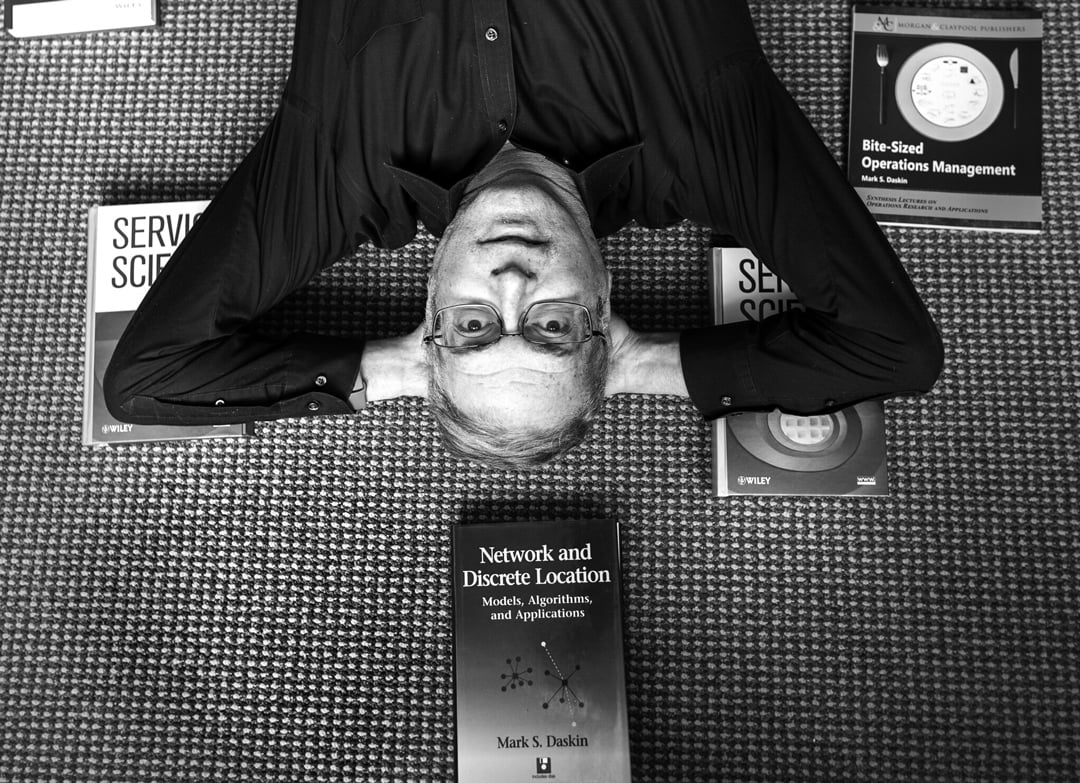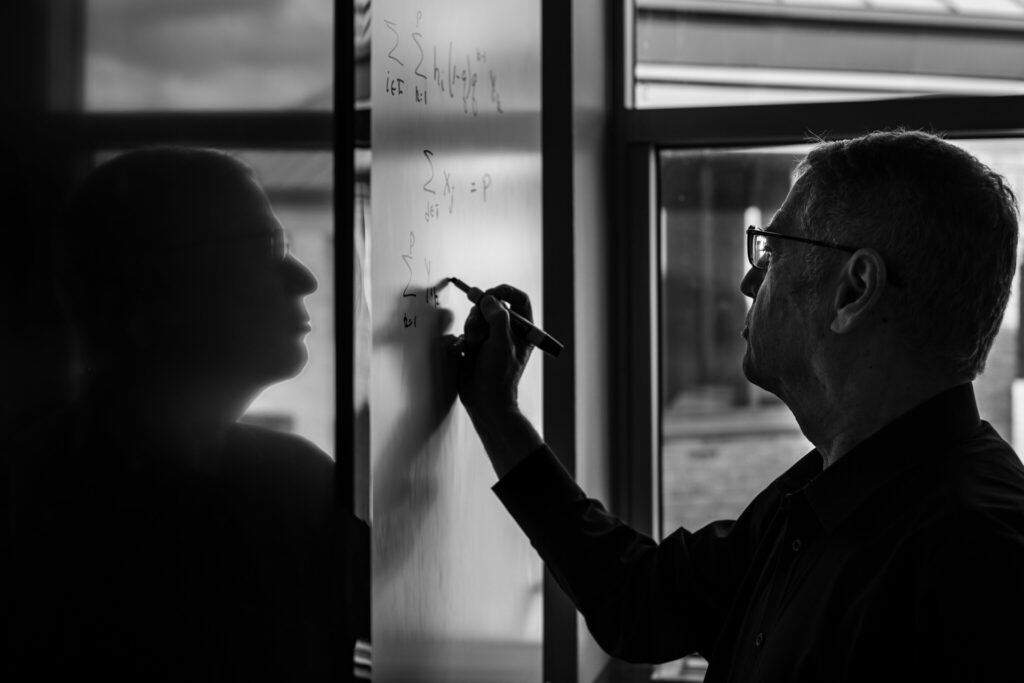
Optimizing the answer to ‘where?’
NAE profile: Mark Daskin, industrial and operations engineering

NAE profile: Mark Daskin, industrial and operations engineering
Initially driven to speed up ambulance response times, Daskin spent much of his career improving the models that governments and corporations use to identify the optimal facility locations. His key contributions incorporate uncertainty, or introduce stochastic components into optimization models for locating facilities. Daskin recognized that, in the initial use case, siting should take into account the likelihood that the nearest ambulance might not be available when needed for service. He named this the Maximum Expected Covering Location Problem (MEXCLP) and the model became foundational to the field. For his leadership and creative contributions to location optimization and its application to industrial, service, and medical systems, Daskin was elected to the National Academy of Engineering in 2017. View the NAE citation.
Get to know Michigan Engineering’s National Academy of Engineering members.
His research group has also examined supply chain design under uncertainty, logistics for emergency responses, and drug shortages.
Daskin’s location models have been used around the world to help optimally site emergency response services, hospitals, schools, factories, warehouses and more. They’ve been leveraged to design more resilient supply chains that minimize the impacts of disruptions such as critical material shortages or natural disasters. His work enables organizations in both the public and private sectors to make more informed decisions that can improve services, lower costs, reduce response times, limit carbon emissions, and even save lives.
More on Mark Daskin

Daskin: I grew up in a family of scientists and engineers, and it just seemed like a natural thing to do. My father was a mechanical engineer. He worked in the aerospace industry. My mother had a Ph.D. in physical chemistry from MIT. She was an academic and became associate dean at Boston University. I think she had a huge influence on my outlook on many things.
I was fortunate enough to be admitted to MIT, and I wanted to major in math, chemistry, or physics. It took them about three terms to convince me that I didn’t want a major in any of those. Along the way, I’d taken a course in civil engineering and the problems they were working on intrigued me. So I went back and got a Ph.D. from the civil engineering department, and then over time I moved from civil engineering to industrial engineering.
When I graduated, I was interviewing both for academic positions and industry positions. I was offered a position at GM Research Labs, which would have been an interesting career path. At the time there was a fairly large salary gap between academia and industry, and there still is today. I figured it would be much easier to start in academia and then move to industry if I chose to do that.
So I decided in 1978 to give academia a try and 44 years later I retired from academia, still giving it a try.
I remember once when I was a little kid, sitting in on a physical chemistry class that my mother taught. That probably had some subliminal effect on me.
Daskin: When I got the job interview at the University of Texas, one of the faculty members I knew at MIT told me I should look up Dave Eaton, who was in the LBJ School of Public Affairs there. One of his research areas is large-scale public works projects. So when I visited, I was able to have a short meeting with him. At the end of the meeting he said, ‘If you get a job offer here and you want to stay with me when you look for houses, I’ll be glad to put you up.’
A few weeks later I called him and I said, ‘You probably don’t remember me and you don’t remember making this offer, but I wanted to take you up on it.’ He said, ‘You’re right. I don’t remember you. I don’t remember making the offer. But sure, you can stay with me.’ And it turns out he was about to start working on a project helping the city of Austin locate permanent bases for their ambulance crews. We had some discussions about it at his house in the evening.
When I got there, four or five months later, he invited me to be part of that project and I was for the 18 months that I was at the University of Texas at Austin. That really sparked my interest in location modeling and over time I did more and more work in that area. Location modeling is a very interesting field. There are some challenging optimization problems. The first book that I wrote dealt with location models. I’ve worked on them on and off for much of my career and I think my contributions in that area are what resulted in my being nominated and elected to NAE and to come here as a department chair.
Daskin: Get as much math education as you can. My father tried to impress that on me, and I’m not sure I followed that advice well enough. I’d also say to get a fairly broad education. I think that many of the problems that we are seeing are the result of people not having a fairly broad education and understanding history to some extent. And I think a strong knowledge of computers is essential.
Daskin: Finding enough time to do everything you want to do is probably the biggest challenge. There’s a constant need to balance your professional life and your personal life, and it’s not easy. I’m not sure I did the best job of that, but I think that’s probably the biggest challenge that just about any academic has. I think that being an academic is nice because you get to pick the hours that you work during the day and if you need to be somewhere at 3:00 in the afternoon, you can do that. But I think most academics work far more than 40 hours a week. You know, 60 to 70 is probably more like the norm. And that can eat into time that you might want to be spending someplace else.
Daskin: I think the salary gap between industry and academia is one of the big problems for our field right now. Companies like Amazon, Google, Microsoft and Facebook can pay very, very large salaries. And there have been a number of prominent faculty members who’ve left academia to go into industry. There are other things that industry has to offer in addition to salary right now, though too.
“If you’re interested in data science, there’s no company that has more data than Google, probably. Amazon certainly has massive amounts of data on people’s buying habits. So if you’re interested in data science and mining data, those are great places to be.
Quotes edited from interview transcript between Mark Daskin and Marcin Szczepanski.